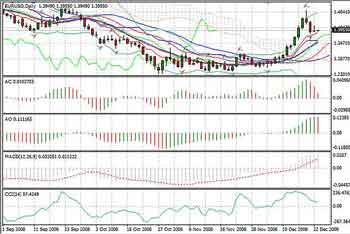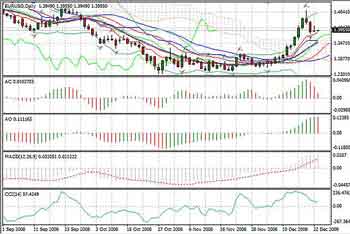 Most of us struggle to know which trading strategies to stick with, and which to abandon… which indicators are worth keeping and which we should be discarding…
Most of us struggle to know which trading strategies to stick with, and which to abandon… which indicators are worth keeping and which we should be discarding…
If you’ve ever watched an animal collecting material for a nest, you’ll have seen how they know exactly what to keep and what to throw out.
It seems to be a skill that human beings have lost.
So, today I thought we could take the same approach to our trading strategies. If your charts are starting to look like a spider having a cardiograph during an earthquake – you’ll know exactly what I mean.
Do you really need all those technical indicators?
Probably not.
By cleaning up your trading charts, you will find that you can access more trading signals, more clearly, and more quickly.
Time to start cleaning up your trading charts!
It’s worth remembering that technical indicators are there to help us.
They are designed to show us more clearly what’s going on, and if they are failing to add simplicity to our charts then they are not doing their job properly.

So, if your trading charts are starting to look something like this one – it may be time to give your indicators a “life laundry”.
But how do you decide what to keep, and what to throw out?
There is no sense that one indicator is better than another – it really depends on your style of trading, and what personally makes sense to you.
There are some trading indicators – Elliot waves, to name one – that just don’t do it for me. Others – like simple moving averages – I wouldn’t want to be without.
So, when selecting indicators, it’s important to choose ones that:
- You find easy to read. (If it takes you too long to work out what they’re telling you, you’ll miss out on trading signals.)
- Ones that you feel are logical – if you doubt the validity of an indicator, you’re less likely to listen to what it’s telling you.
- Ones that supplement each other (more on this in a moment).
Trust versus blind faith
We should select indicators that we trust – but that’s not to say that we should have blind faith in them.
ALL technical indicators get it wrong some of the time. In fact, some of them get it wrong quite a lot of the time.
That doesn’t mean that indicator should be cast out.
The better you understand your technical indicator – the better you’ll know its weaknesses, and the better you can supplement those weaknesses with your second indicator.
For example, understanding that strong momentum in a trending market will quickly push your RSI reading into a false overbought or oversold signal, means that you can look instead to an indicator better suited to those market conditions.

If you better understand your indicators, you don’t need to reject them out of hand for their failings – you’ll learn when to listen to them, and when to treat them with caution.
Perfect pairings
Now, earlier I mentioned the importance of selecting indicators that supplement one another.
What does this mean?
Well, if you combine indicators in a smart way: each indicator you add will give you extra information.
If you combine them without enough thought: one will simply be duplicating the information of the other.
Indicators that duplicate each other can be very satisfying to look at – they will again and again confirm signals, making you feel that you’ve “got it right”. However, in reality, you’re just looking at the same indicator twice.
Second indicators are there to filter out trades that aren’t good enough. If they aren’t filtering out some trades, then they aren’t up to the job.
I find it helpful to think of indicators falling into five main categories:
- Trend indicators: moving averages, MACD, parabolic SAR
- Volume indicators: volume oscillator, Chaikin
- Momentum indicators: momentum, rate of change, RSI, Stochastic, Williams %R
- Volatility indicators: Bollinger bands, average true range
- Cycle indicators: Elliot waves
Try to avoid picking too many indicators from one of these groups. For example, balance a couple of moving average lines with a momentum indicator, like Stochastics. That way, your indicators are working harder for you, so you don’t need to layer more and more technical analysis onto your charts.
The most successful traders I know have very limited technical analysis on their charts – what’s important is to find the ones you want to work with, and apply those with sound management.
